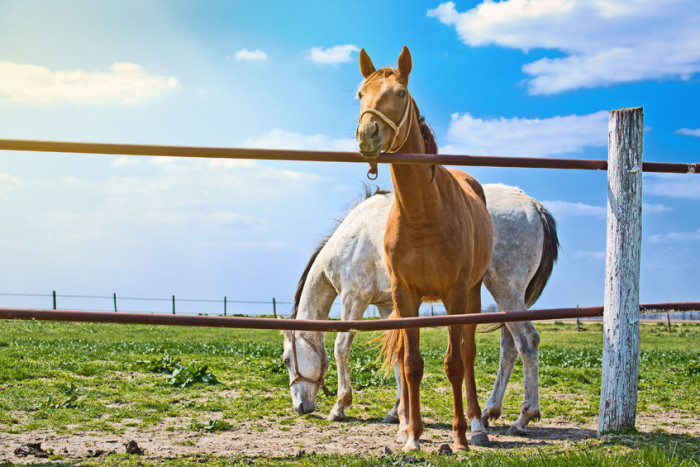Texas is a special place. The vast expanses and huge ranches of Texas are exceptional. Even fencing laws in Texas differ widely from that of the rest of the United States. The state doesn’t impose harsh residential fencing laws, but municipalities in Texas often enact their own ordinances related to fencing.
Whether you’re a rancher, homeowner, or an Austin fence expert, making decisions about your fencing will be easier if you educate yourself on Texas fencing law. The state is affected by the following laws that apply to fencing:
- Common Law
- Stock Law
- Residential Ordinance
- Variance
“Open Range” Common Law
Texans have been cattle ranching for nearly 300 years. It’s common to find large plots of land dedicated to raising cattle as you drive down the farm-to-market roads of south Texas. You might also find livestock crossing those same Texas roads.

Source: National Park Service
Common law, or law enacted by legal precedent, states that Texas is an “open range” state. Animals are allowed to roam free. They don’t have to be fenced in by a common law legal standard. Most modern ranchers know the value of keeping their livestock within the boundaries of the land they own. But the 1893 case of Clarendon Land, Investment & Agency Co. v. McClelland set an important legal precedent. It stated that animals have the right to move as they please across the lands of Texas.
Stock Laws
There are additional laws called stock laws that exist within Texas counties. They are enacted by local vote and overpower common laws. Many Texas counties have stock laws that prevent certain types of animals from breaching their fencing. It is tough to find information on stock laws for your area, though. There’s no official compilation of each county’s stock laws publicly available.
Some sheriff’s offices and attorneys have stock law information available and will release it for a small fee. If you have a ranch with livestock and are looking into fencing, it may be worth the money to get educated on local stock laws.
Residential Ordinances
For neighborhoods and rural areas, the Texas state law is easy. There is none.
Texas hasn’t established a state law that regulates boundary fences in residential areas. Since the size and shape of Texas cities varies so greatly, the laws are often left up to the discretion of the city. The most common city ordinances put boundary and privacy fences at a maximum height of 6 feet in the back yard and 4 feet in the front. It’s a safe guideline, but if your area has unusual geography, look up your local land ordinances to make sure.
Natural Fence Laws
Trees and bushes are surprisingly hearty in the Texas heat. Their resistance to dry, hot weather makes them great for natural fences. Hedges are considered by law enforcement to be fences when they border a property. Trees can also become fences if they are lined along a property line. They then become subject to height restrictions.

But limits for natural fences are unique. Even in the front yard, the most common city ordinances allow natural fences to reach 5 to 8 feet. Upkeep may be more intense for natural fences, so you have to watch your hedges and trees to make sure they don’t violate local ordinances.
Variances
A variance is an exception to the law. They are in place to allow for special issues to be resolved without legal intervention. Residents can apply for variances if they have a legitimate reason to modify fence laws. Common reasons include:
- Concerns for safety in dangerous areas
- Privacy protection
- Noise cancellation for homes near highways
Variances are rare. Their existence is intended to ease the process of bypassing local ordinances. However, your reason for applying has to be legitimate and substantial.







